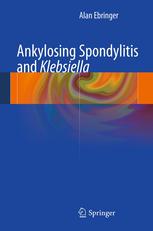

Most ebook files are in PDF format, so you can easily read them using various software such as Foxit Reader or directly on the Google Chrome browser.
Some ebook files are released by publishers in other formats such as .awz, .mobi, .epub, .fb2, etc. You may need to install specific software to read these formats on mobile/PC, such as Calibre.
Please read the tutorial at this link: https://ebookbell.com/faq
We offer FREE conversion to the popular formats you request; however, this may take some time. Therefore, right after payment, please email us, and we will try to provide the service as quickly as possible.
For some exceptional file formats or broken links (if any), please refrain from opening any disputes. Instead, email us first, and we will try to assist within a maximum of 6 hours.
EbookBell Team

0.0
0 reviewsAnkylosing spondylitis and Klebsiella is a comprehensive and informative text on the cause of Ankylosing spondylitis. Ankylosing spondylitis (AS) is a condition which affects 20 million people worldwide and is likely caused or initiated by a bowel infection from Klebsiella bacteria.
When a patient is infected by Klebsiella bacteria, his or her immune system will make antibodies against all the antigens or molecules found in the microbe. Because some of the bacterial antigens resemble self tissues, the anti-bacterial antibodies will attack not only the bacteria but also the self tissues such as the joints and the cells having the same HLA molecules, which is how the disease AS starts. This is the concept of molecular similarity or “molecular mimicry” which previously has been found to work in two other autoimmune diseases; rheumatic fever and rheumatoid arthritis.
The first paper on this subject was published in 1976 and since thenover 100 papers on rheumatological topics have been published, from Prof Ebringer’s group, at the Division of Life Sciences, King’s College in London, UK.
The relevant information from these papers is extracted and presented in this book format making it accessible to health professionals, research institutions, pharmaceutical companies and universities and the general public.